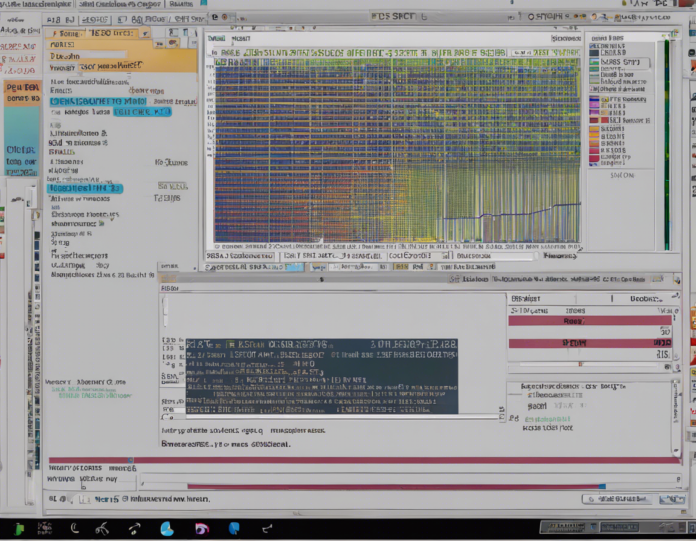In the realm of software development, memory leaks are a common problem that can lead to serious issues if left unchecked. Understanding what memory leaks are, their causes, and how to prevent them is crucial for maintaining the efficiency and stability of software applications. In this comprehensive guide, we will delve into the world of memory leaks, exploring their causes, the impact they can have on your system, and effective strategies to address and prevent them.
What are Memory Leaks?
Memory leaks occur when a computer program or application fails to release memory it has allocated and no longer needs. As a result, the system’s available memory continues to decrease over time, potentially leading to performance issues such as slow response times, crashes, or even system failures.
Causes of Memory Leaks
Several factors can contribute to the occurrence of memory leaks in software applications. Some of the common causes include:
1. Improper Memory Allocation and Deallocation:
- Failing to release memory after it is no longer needed can result in memory leaks. This often happens when developers forget to free up memory that was dynamically allocated during runtime.
2. Circular References:
- When objects reference each other in a circular manner, it can prevent the garbage collector from reclaiming their memory, leading to leaks.
3. Unclosed Resources:
- Not releasing resources such as file handles, database connections, or network sockets can also result in memory leaks.
4. Unused Variables:
- Variables that are declared but never used can still consume memory if not properly deallocated.
Impact of Memory Leaks
Memory leaks can have a significant impact on the performance and reliability of software applications. Some of the repercussions of memory leaks include:
- Reduced Performance: As available memory diminishes, the application may become sluggish and less responsive.
- Crashes and Freezes: In extreme cases, memory leaks can cause the application to crash or freeze, disrupting user experience.
- Resource Contention: Memory leaks can lead to resource contention issues, as the system struggles to manage available memory effectively.
- Increased Costs: Addressing memory leaks after the fact can be time-consuming and costly, especially if they are discovered late in the development cycle or after deployment.
Detecting Memory Leaks
Detecting memory leaks can be a challenging task, especially in complex software systems. However, there are several tools and techniques available to help identify and diagnose memory leaks, including:
- Memory Profilers: Tools like Valgrind, Purify, or Visual Studio’s Diagnostic Tools can help analyze memory usage and detect leaks.
- Heap Dumps: Generating heap dumps and analyzing them can provide insights into memory allocation and identify potential leaks.
- Code Reviews: Thorough code reviews can help catch memory leak issues early in the development process.
Strategies to Prevent Memory Leaks
Prevention is always better than cure when it comes to memory leaks. Here are some effective strategies to help prevent memory leaks in your software applications:
1. Follow Best Practices:
- Adhere to best practices for memory allocation and deallocation, such as always freeing memory that has been allocated dynamically.
2. Use Automated Tools:
- Employ memory profiling tools to detect and address memory leaks during development and testing phases.
3. Implement Garbage Collection:
- Use languages or frameworks that support automatic garbage collection to help manage memory more effectively.
4. Monitor Resource Usage:
- Keep an eye on resource usage metrics and performance indicators to identify potential memory leak issues early on.
5. Perform Regular Testing:
- Conduct regular testing and debugging to catch memory leaks and other issues before they impact users.
Frequently Asked Questions (FAQs)
Q1: What is the difference between memory leaks and memory fragmentation?
A: Memory leaks refer to the failure to release allocated memory, leading to a gradual decrease in available memory. Memory fragmentation, on the other hand, occurs when the available memory becomes scattered in small chunks, making it challenging to allocate contiguous blocks of memory efficiently.
Q2: Can memory leaks occur in languages with automatic garbage collection?
A: While automatic garbage collection can help manage memory more effectively, memory leaks can still occur in languages with garbage collection if developers hold onto references they no longer need, preventing the garbage collector from reclaiming memory.
Q3: How do memory leaks impact system performance?
A: Memory leaks can degrade system performance by consuming available memory, causing slowdowns, crashes, or freezes as the system struggles to manage resources effectively.
Q4: How can I detect memory leaks in my application?
A: You can use memory profiling tools, generate heap dumps, or conduct code reviews to detect memory leaks in your application. Monitoring resource usage and performance metrics can also help identify potential issues.
Q5: Is it possible to completely eliminate memory leaks in software applications?
A: While it may be challenging to completely eliminate memory leaks, following best practices, conducting thorough testing, and using automated tools can greatly reduce the occurrence of memory leaks in software applications.
In conclusion, memory leaks can be a persistent and troublesome issue in software development, but with the right knowledge and tools, they can be effectively mitigated. By understanding the causes of memory leaks, their impact on system performance, and implementing preventive measures, developers can ensure that their applications run smoothly and efficiently, providing a positive user experience. Remember, proactive prevention is key to avoiding the headaches and costs associated with memory leaks down the line.




















